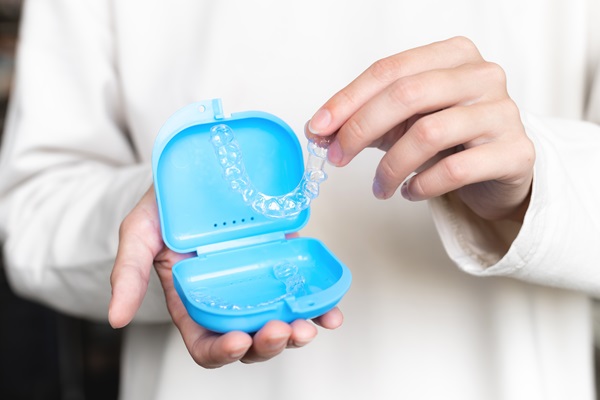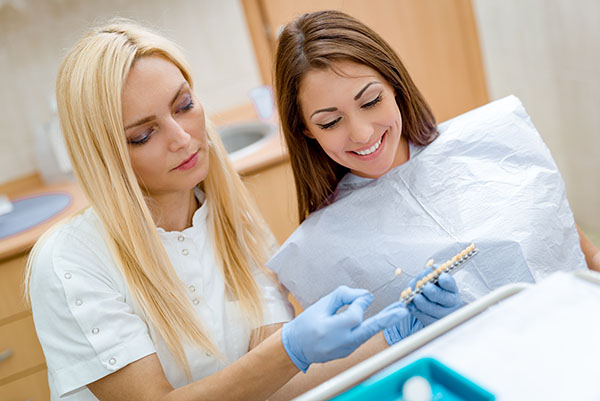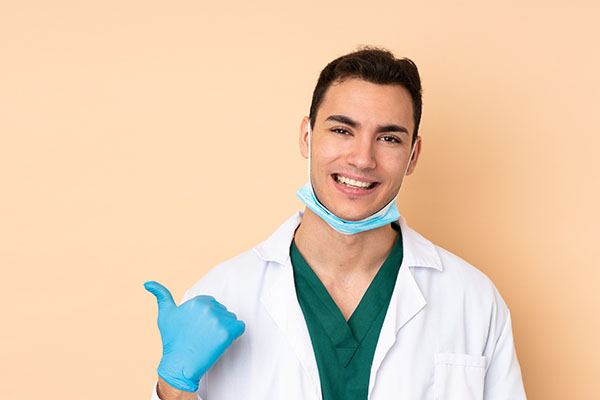Ideal Candidate Traits for Invisalign Therapy

One of the most common orthodontic treatments that a general dentist offers is Invisalign®. This popular way to straighten crooked or crowded teeth offers individuals flexibility and ease while undergoing a discreet method of treatment. With Invisalign®, there are a lot of things to know, as it is a newer orthodontic treatment with a totally different technology than that of traditional braces. Continue reading to find out more about the specifics.
Invisalign®: an orthodontic therapy from a general dentist
Below is an overview of Invisalign®, including who is an ideal candidate and what some of the pros and cons are. This information may be helpful to individuals who are considering different orthodontic treatment options.
The ideal candidate
When it comes to Invisalign®, not everyone is an ideal candidate. Unlike traditional approaches, clear aligners rely on a specific technology that targets certain types of dental problems.
Outlined below are some of the things that a general dentist takes into consideration when performing an orthodontic evaluation on someone who is considering Invisalign®.
- The crowding or crookedness of the teeth has to be considered minor to moderate. Severe cases will require additional orthodontic treatment such as braces, headgear, or a combination of multiple treatments
- Bite corrections can rarely be treated with Invisalign®. Over and underbites are the most common types of abnormalities when it comes to orthodontic treatment. Unfortunately, aligners target the position of each tooth in the upper or lower arch, as opposed to the position of the jaw and teeth as an entire arch.
- Typically, the patient requiring orthodontic treatment must be 16 years of age or older in order to qualify for Invisalign®. Individuals under the age of 16 tend to be less disciplined, which makes clear aligner treatment more difficult to maintain. Additionally, 16 is around the age when most individuals' bone density has fully developed.
- If the patient is underage, a parent's consent must be provided
- The patient must be able to be disciplined enough to wear Invisalign® for at least 22 hours a day; otherwise, the treatment process will be delayed and/or unsuccessful
Pros and cons
Just like all things, Invisalign® too has its pros and cons. Outlined below are a few of each, which are worth considering when navigating through orthodontic treatment options.
Pros
- Invisalign® aligners are removable, which allows for normal eating and proper oral hygiene throughout the entire treatment process. This cannot be said about other orthodontic treatment options
- There is less discomfort because the aligner can be removed and it is one single piece. There are not any wires or metal pieces that can poke the soft tissues in the mouth. It is important to note that there will still be soreness in the mouth as the teeth shift
- Invisalign® is clear in color and hard to notice, which makes for discreet treatment. Adults can reap the benefits of correcting imperfections while still being able to smile publicly
Cons
- If Invisalign® is not worn for 22 hours a day, the treatment process can be delayed. This makes for longer wait times when it comes to seeing desired results. Additionally, there can be added costs to extend the treatment process
- Additional oral hygiene is required because the teeth are enclosed by the aligner at all times, resulting in the potential for bacterial build-up. It is typically crucial to brush and rinse immediately after eating before re-inserting the aligner. This ensures that bacteria do not grow
- Invisalign® cannot solve all orthodontic issues, only minor to moderate straightening conditions, such as crookedness or crowding
What else to know
When it comes to Invisalign, it is good to know that even if one is not a good candidate, there are a lot of other options. For example, clear braces have become quite popular as they offer discreetness while ensuring promising results. Of course, the technology is the same as traditional braces, but the wires are clear and the brackets are tooth-colored.
It is also a possibility that a dentist will recommend traditional braces first and foremost to correct immediate issues. However, sometimes, clear aligners will follow to finish out the treatment process.
Talk to a general dentist
When needing orthodontic treatment, the best thing to do is consult with a general dentist right away. An evaluation can be done to determine whether or not Invisalign® is an appropriate option. If not, clear braces may be a safe backup as they also offer discreetness. During the evaluation, the patient can also ask questions and have any concerns addressed. To find out more or to get scheduled for an appointment, reach out today.
Request an appointment here: https://www.pacificviewsmilecenter.com or call Pacific View Smile Center at (310) 304-1854 for an appointment in our Santa Monica office.
Check out what others are saying about our dental services on Yelp: Invisalign in Santa Monica, CA.
Related Posts
Dental veneers can transform a smile. The American Dental Association defines these as "thin, custom-made shells crafted of tooth-colored materials designed to cover the front side of teeth." These restorations are typically made of porcelain or resin and can last for many years. There are some situations in which veneers need to be replaced; most…
For dental patients wanting minor corrections to cosmetic issues, veneers offer a quick and easy solution by covering the fronts of teeth with a thin shell. Placing these restorations is typically done in three stages and takes around three weeks. It is relatively simple and generally does not involve intense preparation on the patient's part.…
Dental veneers are thin pieces of porcelain that are designed to mimic the appearance of natural teeth. To maximize their effectiveness, patients should learn how to care for them. These appliances are used to enhance the appearance of the smile by covering flaws, such as broken, discolored, chipped, or gapped teeth. With proper care, such…
Preventive dentistry can help you avoid issues like tooth decay and gum disease, which are the most common issues that dentists deal with. Keeping your teeth and gums healthy starts with having a consistent oral hygiene routine.Many of the dental issues that you might find yourself dealing with start with the bacteria in your mouth.…


